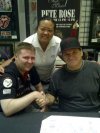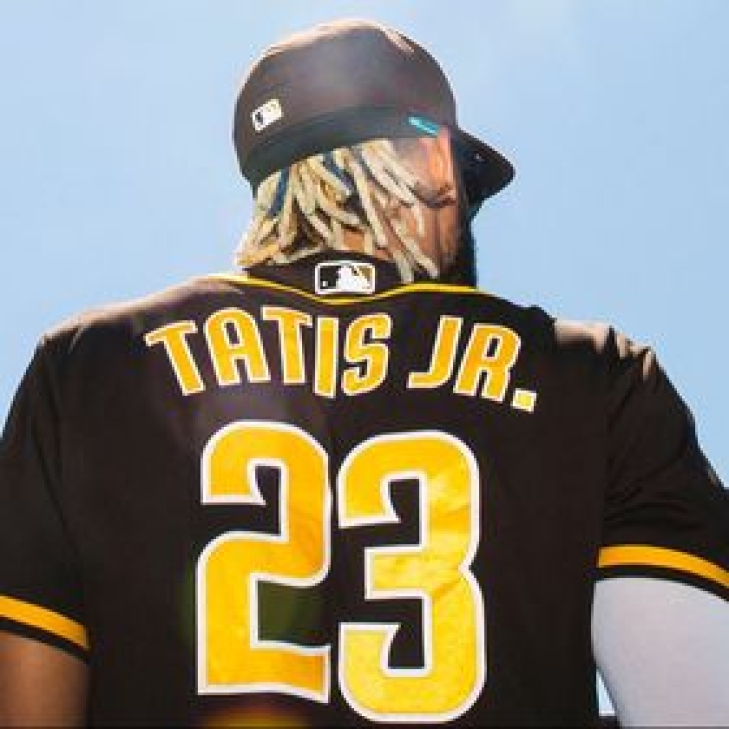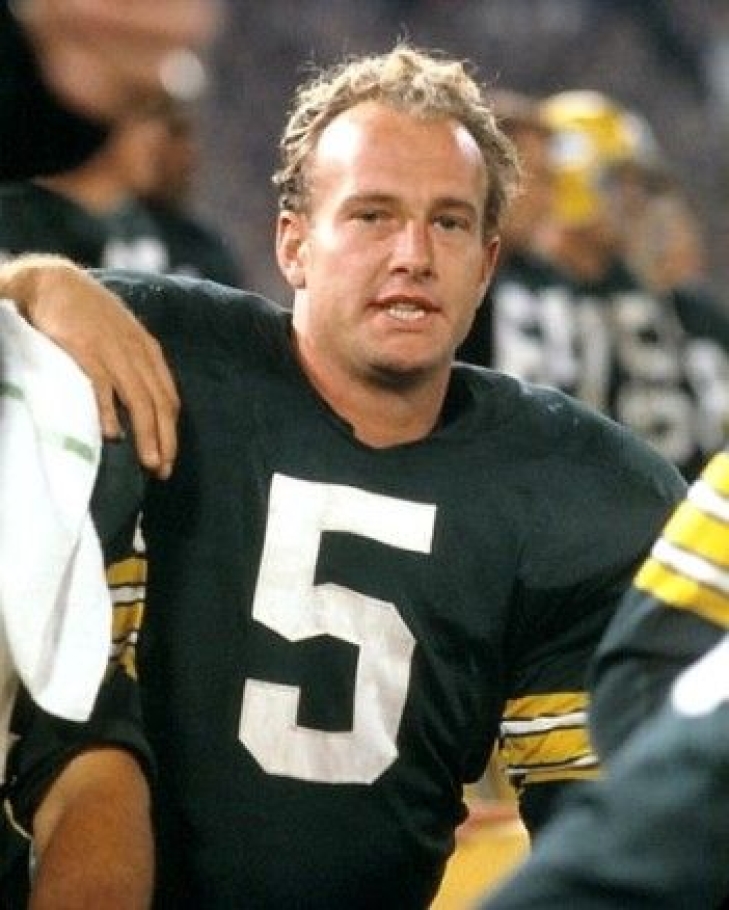
Committee Chairman
Injury Updates in the Age of Social Media: Speed, Hype, and Ethics
Social media has changed how we do things, and the sports arena hasn’t been left behind. One of the biggest impacts on the industry is how information is spread, whether it’s true or not. With injury updates being on top of sports and MLB news in particular, a lot has changed over the years, from misinformation to taking power from traditional media.
In this guide, we’ll look at some of the ways social media has changed how we watch sports and get injury updates.
From Newsrooms to Newsfeeds
In the past, sports fans received player injury news through team press releases, journalists, and television reports. However, this process has changed entirely, with all updates now just a few clicks away.
Long before you get injury updates on television, they’ve already been delivered on social media. In some cases, the players themselves deliver or confirm the news, showing the influence and power that these platforms now have.
Instant News and Fan Reactions
Sports aficionados are always looking for updates as the game unfolds, and social media platforms like X and Facebook ensure they get each detail on time. Player injury news spread quickly, even before the official announcement.
This promptness creates a buzz among fans, who immediately start speculating about the player’s future. Discussion will then go further to a team’s next lineup and chances for the season, especially if it’s a long-term injury to a key player.
Speed and Spread
One of the most impressive and key features of social media is the speed at which news and injury updates are spread. It only takes a single person to share “inside information” on one social platform, and it will be shared by many others and reach millions in a few minutes. It will even cross social media platforms and become mainstream.
When any news is shared, it immediately sparks fan reactions, discussions, and follow-ups. This also happens when a player goes during a game, with instant speculations on the type and length of injury starting.
This speed of sharing helps keep fans informed, and fantasy managers can make quick decisions before prices change.
Accuracy vs. Hype
While social helps fans get news updates instantly, the information often lacks proper verification. Most social media account owners rush to be the first to share updates, and this often makes them share not-so-accurate reports.
This is quite a concern as, just like any other news, fake news spreads quickly. It misleads fans, and sometimes, it can even place undue stress on players. The impact spreads even further and affects other sports-related activities, such as betting markets.
This means that when consuming information released on social media, it’s important to check the sources. Some fan pages can often post inaccurate information, so confirm with reliable personalities.
The Athlete’s Voice
A great plus for social media is that it gives players control over their narratives. Injured players can share updates via these platforms, thank followers for their support, and share their recovery journey. This openness builds better relationships with fans and humanizes players beyond the statistics.
However, it’s crucial to note that the openness also invites scrutiny. Viral reactions pressure athletes, especially when they return after a long time.
Clubs and Control
Social media is a double-edged sword for sports organizations. On one end, it gives fans a direct communication line and allows them to feel like a part of the organization.
However, it also requires constant monitoring and strategic PR management, as a poorly worded tweet or premature post can stir up attention. It’s important for clubs to engage journalists and then release timely official injury updates.
NIHOF MLB 2025 Cup Standings: Week 3, APR 20
It is with great pleasure that we are bringing back the Notinhalloffame MLB Regular Cup, and let us explain how this works:
For every regular-season game, we anointed the best five players with descending points, 5-4-3-2-1.
We know the following:
- The top players for the MLB NIHOF Cup are not always the best in the league, as injuries keep players out of games, and a premium on staying healthy can help pile up points. It also does not hurt to be a top player on an average or mediocre team, as they can amass Cup points more easily than elite players on loaded squads.
- In Baseball, it is more common than in Basketball and Hockey for a player to accrue points with a single Home Run in a game, which favors position players. Starting Pitchers have a hard time with approximately 30-35 Starts and throwing fewer innings than previous generations. This is also true for closers not made for this process.
- Please remember that this is NOT necessarily who we think were the best players this year and does not reflect overall consistency. Treat this the way we did: as a fun process and more of a compilation of temporary statistical domination.
Here is the current top ten after games concluded on April 20.
1. Pete Alonso, New York Mets: 46 Cup Points in 15 Games. (#1 Last Week). 1.8 bWAR, 13 Runs, 27 Hits, 6 Home Runs, 24 Runs Batted In, .346/.453/.718 Slash Line, 1.171 OPS & 232 OPS+.
2. Fernando Tatis Jr., San Diego Padres: 40 Cup Points in 21 Games. (#6 Last Week). 2.1 bWAR, 22 Runs, 29 Hits, 8 Home Runs, 16 Runs Batted In, .358/.436/.691 Slash Line, 1.128 OPS & 214 OPS+.
3. Corbin Carroll, Arizona Diamondbacks: 33 Cup Points in 22 Games. (#4 Last Week). 1.4 bWAR, 19 Runs, 30 Hits, 7 Home Runs, 19 Runs Batted In, .323/.394/.645 Slash Line, 1.039 OPS & 186 OPS+.
4. Aaron Judge, New York Yankees: 31 Cup Points in 22 Games. (#9 Last Week). 1.7 bWAR, 21 Runs, 32 Hits, 7 Home Runs, 25 Runs Batted In, .390/.495/.707 Slash Line, 1.202 OPS & 245 OPS+.
5. Spencer Torkelson, Detroit Tigers: 30 Cup Points in 22 Games. (Not in the Top Ten last week). 1.2 bWAR, 17 Runs, 23 Hits, 7 Home Runs, 21 Runs Batted In, .288/.392/.638 Slash Line, 1.029 OPS & 195 OPS+.
6. Josh Naylor, Arizona Diamondbacks: 29 Cup Points in 22 Games. (Not in the Top Ten last week). 0.9 bWAR, 14 Runs, 28 Hits, 4 Home Runs, 15 Runs Batted In, .333/.406/.548 Slash Line, .954 OPS & 165 OPS+.
7. (TIE) Kyle Tucker, Chicago Cubs: 27 Cup Points in 24 Games. (#8 Last Week). 1.1 bWAR, 22 Runs, 29 Hits, 6 Home Runs, 23 Runs Batted In, .302/.404/.614 Slash Line, 1.018 OPS & 188 OPS+.
7. (TIE) Bobby Witt Jr., Kansas City Royals: 27 Cup Points in 23 Games. (Not in the Top Ten last week). 1.1 bWAR, 15 Runs, 27 Hits, 2 Home Runs, 9 Runs Batted In, .307/.370/.477 Slash Line, .847 OPS & 142 OPS+.
7. (TIE) Bryce Harper, Philadelphia Phillies: 27 Cup Points in 22 Games. Not in the Top Ten last week). 0.9 bWAR, 16 Runs, 22 Hits, 5 Home Runs, 14 Runs Batted In, .272/.404/.506 Slash Line, .910 OPS & 155 OPS+.
7. (TIE) Matt Chapman, San Francisco Giants: 27 Cup Points in 22 Games. Not in the Top Ten last week). 1.2 bWAR, 12 Runs, 18 Hits, 4 Home Runs, 14 Runs Batted In, .240/.406/.440 Slash Line, 0.846 OPS & 148 OPS+.
7. (TIE) Cal Raleigh, Seattle Mariners: 27 Cup Points in 22 Games. Not in the Top Ten last week). 1.2 bWAR, 14 Runs, 20 Hits, 9 Home Runs, 15 Runs Batted In, .233/.333/.593 Slash Line, .926 OPS & 175 OPS+.
Los Angeles (AL)’s Kyren Paris, Los Angeles (NL)’s Teoscar Hernandez, Miami’s Kyle Stowers, Milwaukee’s Jackson Chourio, Philadelphia’s Kyle Schwarber, and San Francisco’s Wilmer Flores fell off the top ten.
Of note, 627 baseball players have obtained at least 1 point. This is up from 529 last week.
The Pro Football Hall of Fame Revisited Project: 1976 Final VOTE
1976 Pro Football Hall of Fame Revisited Project Class.
Here we are! Again!!
If you have been following our Pro Football Hall of Fame Revisited Project, you know we have asked the rhetorical question: What if the PFHOF began in January 1946?
After soliciting and obtaining a passionate group of football fans and historians, we sent out a ballot for a Preliminary Vote, in which we asked each voter to give us 25 names as their semi-finalists and 5 in the Senior Pool. We then asked the group to vote for their 15 Finalists in the Modern Era and 3 in the Senior Category. The final stage was to vote for their five Modern Era inductee and one Senior inductee.
This is the result of the 31st official class.
Below are the final results of this project based on 30 votes.
Remember that we have reverted back to the top five candidates entering the Hall.
This is for the “Modern Era”
*Bold indicates they have been elected to the Pro Football Hall of Fame Revisited Class of 1976:
|
Player |
Year of Eligibility |
Vote Total |
|
Jerry Kramer G |
3 |
21 |
|
Paul Hornung HB |
5 |
18 |
|
Tommy McDonald FL-WR |
3 |
17 |
|
Henry Jordan DT-DE |
2 |
15 |
|
Alex Karras DT |
1 |
14 |
|
Joe Fortunato LB |
5 |
13 |
|
Del Shofner E-DB |
4 |
11 |
|
Tom Sestak DT |
3 |
9 |
|
Billy Howton E-FL |
8 |
8 |
|
Billy Shaw G |
2 |
8 |
|
Pat Harder FB |
18 |
7 |
|
Gino Cappelletti FL-SE-DB-WR-K |
1 |
7 |
|
Eddie Meador DB |
1 |
6 |
|
Billy Wilson E-FL |
11 |
3 |
|
Jimmy Patton DB |
5 |
3 |
This is for the “Senior Era”,
*Bold indicates they have been elected to the Pro Football Hall of Fame Revisited Class of 1976.
|
Marshall Goldberg |
3 |
10 |
|
Whizzer White |
10 |
9 |
|
Woody Strode |
2 |
8 |
|
None of the Above |
N/A |
5 |
This is for the “Coaches/Contributors”,
*Bold indicates they have been elected to the Pro Football Hall of Fame Revisited Class of 1976.
|
Buddy Parker (COACH) |
7 |
15 |
|
Lamar Hunt (OWNER) |
1 |
14 |
|
Charles Bidwill (COACH) |
7 |
3 |
|
None of the Above |
|
0 |
About the 1976 Inductees:
Jerry Kramer G, GNB 1958-68: Inducted in the Pro Football Hall of Fame Revisited Project in 1976 on his 3rd Ballot. Inducted into the actual Pro Football Hall of Fame in 2018.
Green Bay fans know how good Kramer was and will never forget the “Packer Sweep”! Kramer was named a First Team All-Pro on five occasions, and that was the same number of Championships that the stalwart of the Packers' Offensive Line would help them win, three NFL Championships and two Super Bowls, and he is one of the classiest players ever to suit up on the gridiron. He was also named to the 1960s All-Decade and 50th Anniversary Team.
Paul Hornung, HB-FB-QB, GNB 1957-62 & 1964-66: Inducted in the Pro Football Hall of Fame Revisited Project in 1976 on his 5th Ballot. Inducted into the actual Pro Football Hall of Fame in 1986.
One of the few players who won a Heisman Trophy and a National Football League MVP, Paul Hornung was a key member of the Packers dynasty of the 1960s. He was at his best in the early ’60s, where he received his two First Team All-Pro Selections, and in 1960, he would lead all rushers with 13 Touchdowns.
Hornung’s best games occurred when the Packers needed him the most, as he scored 19 Points in the 1961 Championship Game and rushed for over 100 Yards in the 1965 Championship Game.
The versatile player was also used on special teams, where he was used as the team’s kicker.
Tommy McDonald, FL, PHI 1956-63, DAL 1963, RAM 1965-66, ATL 1967 & CLE 1968. Inducted in the Pro Football Hall of Fame Revisited Project in 1976 on his 3rd Ballot. Inducted into the actual Pro Football Hall of Fame in 1998.
Using every bit of field vision and timing to compensate for his 5'9” frame, Tommy McDonald was drafted as a Halfback but was moved to Wide Receiver (Flanker), where he excelled on a Philadelphia Eagles squad that won the 1960 NFL Championship. He would then lead the league in Receiving Yards the following year.
From 1958 to 1962, McDonald recorded a staggering 56 Touchdowns in 63 Games, set the still-standing Eagles record for Receiving Yards in a game (237), and, at the time of his retirement, his 84 Touchdowns were second all time.
Henry Jordan, DT-DE, CLE 1957-58 & GNB 1959-69. Inducted in the Pro Football Hall of Fame Revisited Project in 1976 on his 2nd Ballot. Inducted into the actual Pro Football Hall of Fame in 1995.
The spark plug for the 1960’s Green Bay defense, Henry Jordan played Right Defensive Tackle for the Green Bay dynasty and rattled off five consecutive (1960-64) First Team All Pro Selections. He would enter the Pro Football Hall of Fame in 1995, which was two decades after Green Bay chose Jordan for their Hall.
Alex Karras, DT, DET 1958-62 & 1964-70. Inducted in the Pro Football Hall of Fame Revisited Project in 1976 on his 1st Ballot. Inducted into the actual Pro Football Hall of Fame in 2020.
“Never mind that shit. Here comes Mongo!”
Alex Karras may not have been the best defensive player to ever suit up for the Detroit Lions, but there was no denying that he was the most popular and was in many ways iconic.
Karras would remain in the public eye long after football for his television, film, and broadcasting work, but he was one hell of a player at Defensive Tackle. A four-time Pro Bowler and member of the 1960’s All-Decade Team, Karras was a dominating figure for the Lions throughout the 1960s (barring the one year in 1963 when he was suspended for gambling on the NFL).
Ten Of The Best Free Agents Post NFL Season?
The off-season is an important time for NFL teams. It’s when they can start planning their strategies for the next season, draft in the rookies who they hope will become the future mainstays of their teams and generally get their houses in order.
It’s also when plenty of free agents appear, floating around with the option of signing for a new franchise. While the very best are snapped up fairly quickly, plenty remain on the market.
There have been some good choices, and some not so good ones, in the past. But any of these ten could prove to be well worth snapping up.
Brandon Scherff
Even though he’s 34 now there may still be plenty left in the tank for Scherff. Last season he had a very respectable 93.8% pass block win rate for the Jacksonville Jaguars and the second highest of his decade-long career. He has managed to remain relatively injury free over the years – and let’s not forget that back in 2015 he was a top five pick in the draft.
Tyler Lockett
For many seasons Lockett has been a dependable, if unspectacular, part of the Seattle Seahawks set-up. But over the ten seasons he has played in at least 15 games a year. That said, his lightning speed of old may have dissipated slightly although he can still move round the field effectively enough to make himself available to the QB.
Mike Hilton
If you’re looking for a player who’s going to hang on in there and could even improve a team’s odds in the sports betting, you’ve found him in Mike Hilton. He’s a cornerback who always carries himself with a real sense of urgency. So while he may not be the biggest on the field, he’s always one of the hardest working. Last season he made 12 tackles for loss and eight pressures while his career record is 13 interceptions, 11.5 sacks and 34 pass break-ups.
Kyzir White
Linebackers who may be slightly past their prime aren’t always top of the shopping list but Kyzir White should be an exception. He’s long been an unsung hero for the Arizona Cardinals where coach Jonathan Gannon has certainly brought out the best in him after their relationship started back with the Philadelphia Eagles. Last season saw him notching up nine tackles and 2.5 sacks, more than enough to catch the eye of a prospective new coach.
J K Dobbins
With stats like 27 carries of ten yards or more and a 2024 season that saw him achieving 907 rushing yards Dobbins looks like a free agent who won’t be free for very long. The one question hanging over him is how long he can go without injury striking him down. His 2023 season started with a torn achilles and since then a knee problem sidelined him for four games. But when he’s fit he’s explosive, it’s just a question staying that way.
Rasul Douglas
Over his career Douglas has put in the hard yards for both the Green Bay Packers and his current team, the Buffalo Bills. He’s never been the fastest cornerback in the sport and 2024 saw him slowing down still further. But his skills as a major disrupter remain as many pass catchers have discovered to their cost. So there’s definitely a role for him as a perimeter player in a team.
Justin Simmons
In many ways Simmons typifies the journeyman player. He’s solid without ever being spectacular and that’s just how he’s spent his time with the Atlanta Falcons. He’ll be hoping to revive the sort of playing standard that has seen him making multiple interceptions over his nine-season career to date.
Asante Samuel Jr.
Here’s another free agent who might be wishing he had a better medical history. He was only good for four games last season thanks to a shoulder injury. But when he’s fit he’s fast and got great game awareness. He’s also hoping to follow in his father’s footsteps as a playmaker who makes a difference.
Amari Cooper
His stats alone make Cooper well worthy of consideration. Last season he caught 44 passes for 547 yards and made four touchdowns. He’s also made over the 1000-yard receiving mark in seven of his nine seasons.
Aaron Rodgers
He might never make MVP again and he has undoubtedly had a turbulent couple of seasons at the New York Jets. But once a great QB, always one worth watching. He might not even want to play, he is 42, after all. If he does, there are sure to be several teams who would be proud to have him on the roster.
So there they are. Ten great free agents – and as to where they could be heading we’ll just have to wait and see.





